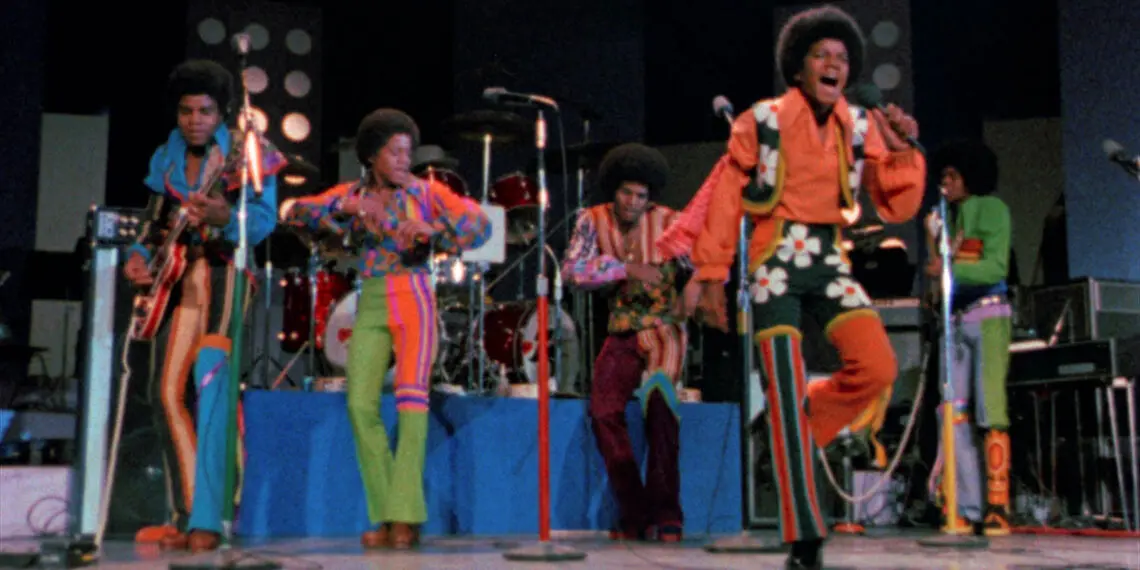Forgotten ’70s concert film featuring the Jackson 5 gets a Netflix revival
Once lost to the archives, “Save the Children” is a quintessential ‘70s concert film that has been resurrected after nearly 50 years, promising a vibrant journey back to an era teeming with musical and cultural revolution.
A star-studded concert for a cause
Back in 1972, Chicago witnessed a spectacular concert aimed at supporting Rev. Jesse Jackson’s Operation PUSH. The event featured an all-star lineup of Black music legends, including the Jackson 5, Marvin Gaye, Curtis Mayfield, and Bill Withers. Despite the phenomenal talent, the film barely saw the light of day after its initial 1973 release. The movie didn’t get an authorized home-video release and seemingly vanished from the public eye.
Netflix has intervened, hoping to bestow upon “Save the Children” the audience it always deserved.
The soul of a generation on screen
Behind the scenes
Quincy Jones, Berry Gordy, Al Bell, and Clarence Avant were some of the big names who brought their expertise to this project. Their combined influence and vision were key to assembling such an impressive lineup. The documentary, rich in musical genius, captures performances by the Staple Singers, Roberta Flack, Isaac Hayes, Gladys Knight, and many others.
The battle to revive “Save the Children” wasn’t straightforward. Filmmaker Stan Lathan, who directed this gem, recalls how it got lost in the archives of Paramount Pictures following an underwhelming theatrical release.
“It kind of disappeared for years because Paramount kind of… I wouldn’t say they dropped the ball, but they released it in a few cities, and when it didn’t perform the way they wanted it to, they kind of put it down, and then somehow it got lost,” Lathan explained.
A triumphant return
For the first time in decades, the film was showcased at the Chicago Film Festival, attended by Jesse Jackson, his son Yusef Jackson, and Lathan himself. This significant event served as the official re-premiere of the documentary, celebrating its remarkable background and extraordinary musicianship.
Rediscovering the brilliance
Unmatched performances
The film includes what is described as the only film footage of the Jackson 5 in 1972 — a year when they were as popular as modern-day superstars Taylor Swift or the Beatles. Their performance is achieving new fame for its historical value and sheer dynamism.
The documentary doesn’t just offer performances; it provides a narrative about the cultural and social milieu of the era. We’re treated to a story, told with precision, that highlights the American backdrop during the ascendancy of Jesse Jackson.
A deep dive into production
One striking aspect of the film was its commitment to employing an all-Black crew. Jesse Jackson’s vision for the concert included a focus on Black empowerment behind the scenes as much as in front of the camera.
“Jesse Jackson’s PUSH Expo was a huge yearly event that brought lots of people together for civil rights, and he wanted to do a big concert with some of the top artists. But he also had it in his mind that he would try to do it with an all-Black crew,” Lathan mentioned.
This decision added layers of meaning to the film, offering an authentic view through the lens of Black filmmakers and cameramen. Every reaction shot and performance was captured from a perspective deeply ingrained in the community’s experiences.
The technical renaissance
Remastered and polished, the film’s visual and auditory elements have been significantly improved. The surround sound at Capitol Studios ensures the music is delivered with contemporary clarity.
Stan Lathan, reflecting on the modern revival, noted:
“We didn’t change anything content-wise, but it looks good, the soundtrack is great, and I’m thrilled about this.”
An impactful legacy
Alan Elliott, who played a crucial part in nudging the film towards re-release, rightly touted the film’s intrinsic value:
“Bill Withers looks like he should be on Mount Rushmore. Gladys Knight should be standing right next to him.”
For Elliott, the revival of this documentary provides an essential historical record of soul music, and it’s a proud achievement for all involved in making it available to today’s audiences.
Why “Save the Children” matters today
The long-neglected “Save the Children” serves as a cultural time capsule, illustrating the brilliance of Black musicianship against the backdrop of social change. It’s a celebration of talent, a nod to history, and a meticulously assembled masterpiece showcasing the teamwork and vision needed to make such a project come to life.
Reclaiming this film isn’t just about relishing the music; it’s about acknowledging the cultural and historical significance of that time. For modern audiences, it’s an opportunity to experience raw and powerful performances that shaped the soul of the ‘70s.
Remember to stay connected with us for more insights and engaging stories about the world of film and music. Share this article with those who appreciate the historical depths of music and its lasting influence.
For more information, you can explore the trailer of Save the Children.

 Italian
Italian







